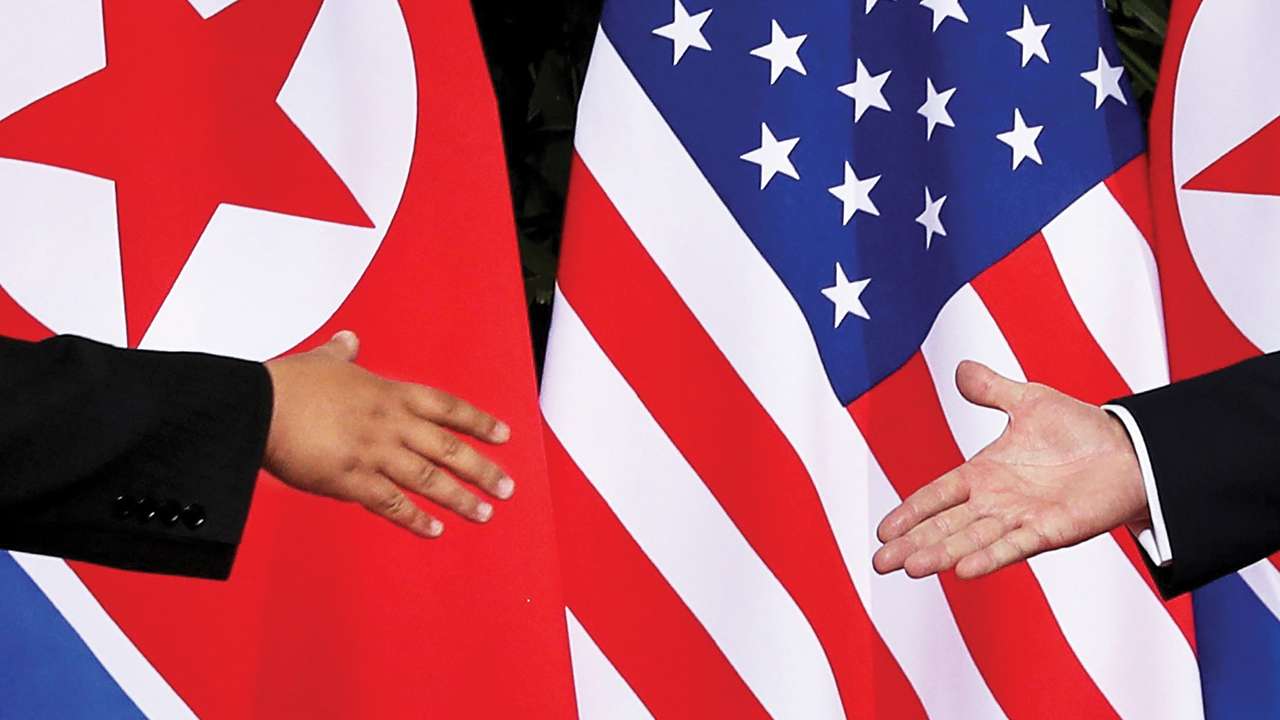
Less than a year after US President Donald Trump’s intentionally humiliating description of the North Korean leader as “Little Rocket Man” and Kim Jong-un’s even more offensive retort, “I will surely and definitely tame the mentally deranged US dotard with fire,” the two leaders seemingly had a very amicable first meeting in a historic summit at Singapore earlier this week. The summit promises much and both leaders have committed to jointly work towards ushering in an era of peace and prosperity not only on the Korean Peninsula but in the region and the world as a whole.
Outwardly, the joint statement is a positive document that sets out a road map to achieve this objective. North Korea has committed to work towards complete denuclearisation of the Korean Peninsula while the US President has assured security guarantees as a confidence-building exercise. Trump has agreed to suspend the upcoming US military exercises with South Korea, calling them as “provocative and expensive.” This has naturally set alarm bells ringing, especially in Seoul, which has otherwise been active in playing the role of a mediator between the US and North Korea. Trump has also talked of US troop reduction in the region without consulting either his allies or his military commanders, thereby seeming to pave the way for a bigger Chinese role, much to the chagrin of US regional allies and the Pentagon.
So as the dust settles down, there is deep scepticism about the agreement. The Joint Statement lacks details on how “North Korea would give up its nuclear weapons and how that process would be verified.” It is also disappointing that Trump did not challenge North Korea about its abysmal human rights record.
This, therefore, raises the question whether the summit was only about optics or will it set the path for concrete deliverables by North Korea? On the whole, it seems that the summit “produced little more than frothy statements without substance, with little accountability for Kim Jong-un to cease and dismantle his nuclear weapons program.” According to Jung Pak, Chair of the Korea Studies Program at the Brookings Institute in Washington, DC, “By agreeing to meet with Kim Jong-un, President Trump legitimated Kim as a leader. He also offered Kim numerous concessions,” thereby helping raise Kim’s profile both within North Korea and internationally. The general mood is that Trump’s effusiveness and his invitation to Kim to come to the White House were uncalled for.
To assuage concerns, the US Secretary of State, Mike Pompeo travelled to South Korea and Japan to apprise the two key US regional partners about the details of the summit. He dismissed reports by the North Korean state media that indicated that the US would grant immediate concessions to Pyongyang as it gradually progresses towards denuclearisation. He has stated that the US remained “committed to achieving the complete, verifiable and irreversible denuclearisation of North Korea”. Pompeo has also assured that the alliance between the US, South Korea, and Japan remained “ironclad”, despite President Trump’s announcement about ending military drills.
On balance, though the Trump-Kim summit is just the beginning of a process, given North Korea’s past record of backing off from its commitments, one is wary. The US administration has announced that Pompeo and a designated North Korean official will remain engaged in complex negotiations to hammer out the modalities and carry forward the spirit of the Singapore announcement through more detailed technical discussions. But with two unpredictable leaders, one cannot be sure.
From an Indian perspective however, the meeting between the US President and the Korean leader is a good “first step” with potential to address India’s core proliferation concerns in its own neighbourhood by bringing the focus on Pakistan’s nukes and its linkages with China and North Korea, especially if the latter starts a verifiable denuclearisation process.
A Ministry of External Affairs statement expressed confidence that the “outcomes would be implemented, thus paving the way for lasting peace and stability in the Korean Peninsula.” New Delhi described the meeting as a “positive development” and expressed hope “that the resolution of the Korean Peninsula issue will take into account and address our concerns about proliferation linkages extending to India’s neighbourhood.”
India, which was North Korea’s third-largest trading partner before international sanctions kicked in, also used the upcoming Trump-Kim meeting to step-up its own diplomatic links with North Korea by sending its Minister of State for Foreign Affairs, the first high-level visit since 1998, a couple of weeks before the Singapore meeting. This was an opportunity to drive home the message that India has an Embassy in Pyongyang since 1973 and has “trained North Korea’s military officers, people in technology, their diplomats” at various Indian establishments.
One takeaway from the summit is that it seems to re-validate a US commitment to remain actively engaged in the region. While the initial ‘ice-breaker’ was facilitated by China, the meeting evolved into a US-North Korea show.
Will Trump, therefore, build upon his vision enunciated in the National Security Strategy document of December 2017 where an entire section is devoted to the challenges posed by China, the importance of the Indo-Pacific and the prominent role it envisages for India in its strategy? Or will the “Deal” prove to be short-lived?
The writer is senior Fellow at Vivekananda International Foundation, New Delhi. Views expressed are personal.